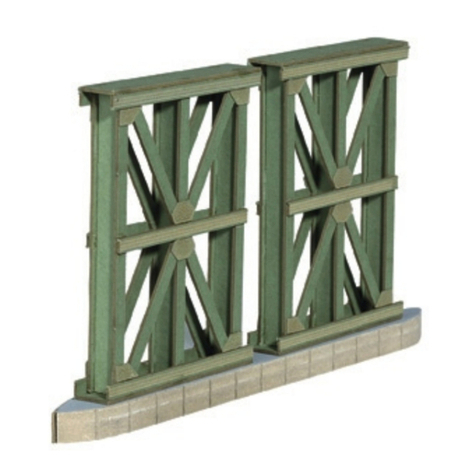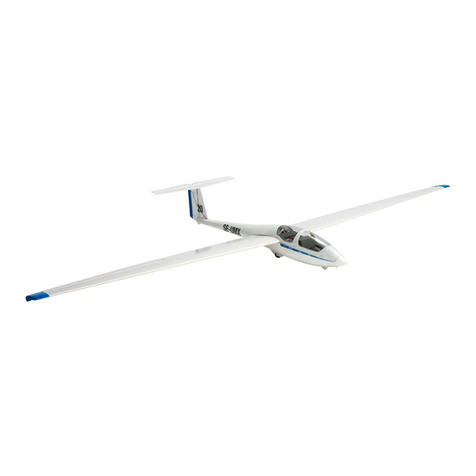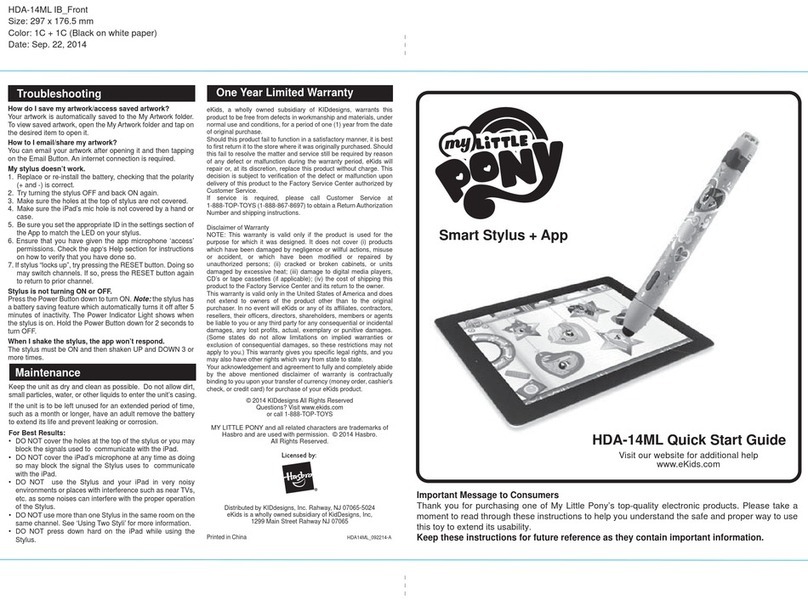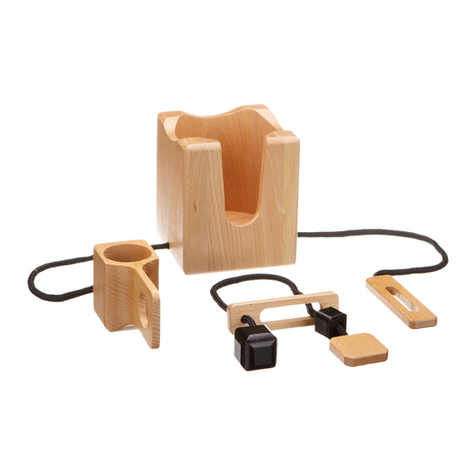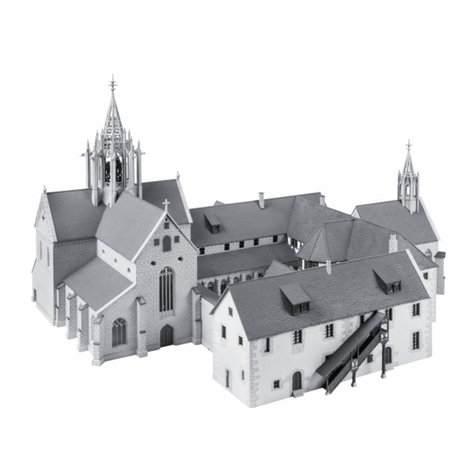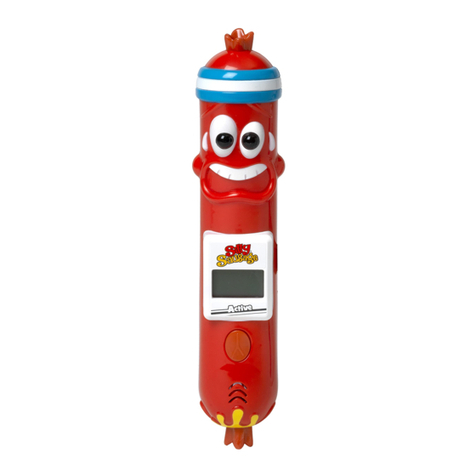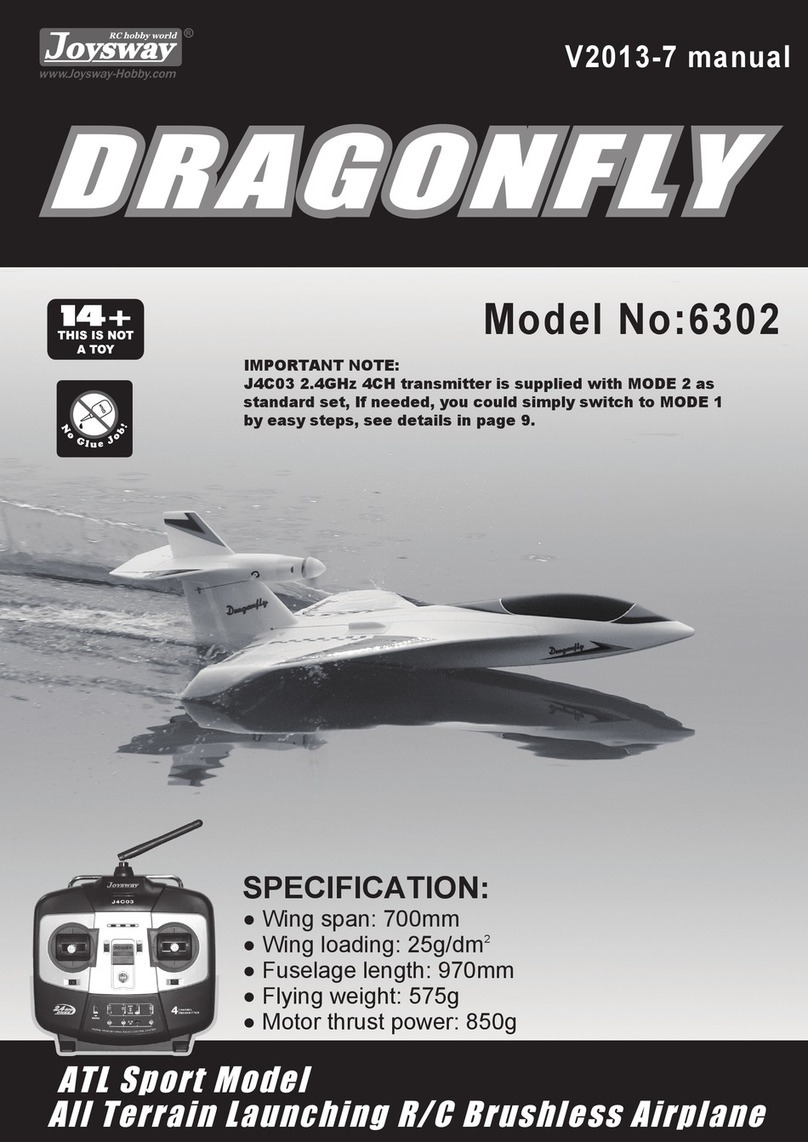Clementoni Action & Reaction User manual

Clementoni S.p.A.
Zona Industriale Fontenoce s.n.c.
62019 Recanati (MC) - Italy
Tel.: +39 071 75811
www.clementoni.com
Read and keep the instruction manual for future reference.
Reaction
®
&
Action
N. 2

INTRODUCTION
Action & Reaction is a complete kit allowing you to build plenty of fun circuits and experiment – through
trial and error. In other words, the action and reaction principle!
FUNCTIONAL ELEMENTS AND CIRCUITS
The components of this toy are modular, which means that you can t them together in various ways. Follow
the instructions of the A3 sheet supplied with the toy, you will learn how to combine the components
together and assemble the most important functional elements which you can use to obtain the chain-
reaction eects to be inserted along the various points of the circuit. After completing these “exercises”,
you can start assembling the 6 circuits proposed below, which have dierent levels of complexity. Unleash
your imagination and have fun nding new and fun ways to combine the elements and create new and
thrilling chain reactions!
CONTRAPTIONS
Some of the tracks illustrated below are special, as they
will introduce you to the concept of contraption. This
idea, invented in the early 20th century by the ingenious
imagination of cartoonist Rube Goldberg, consists of
creating “household” mechanisms in which an element’s
movement triggers seemingly impossible eects and
ordinary objects, such as boxes, plastic cups or pencils,
can become an integral part of complicated and fun chain
reactions that are only limited by your imagination! In
addition to the routes proposed below, therefore, you can
create “mixed” routes by combining the toy’s elements
with household objects.
CONTENTS
Introduction to the kit........................................................................................................................................................................................... Page 2
Safety tips....................................................................................................................................................................................................................... Page 2
Components of the kit.......................................................................................................................................................................................... Page 3
Assembly tips............................................................................................................................................................................................................... Page 4
Medium-diculty routes.................................................................................................................................................................................... Page 5
Dicult routes ............................................................................................................................................................................................................ Page 21
Rube Goldberg (San Francisco 1883 – New York 1970)
SAFETY TIPS
WARNING: Do not aim at eyes or face.
NOTE: the models cannot be constructed
simultaneously.
Warning: when you build the routes, follow
the advice given in the instructions and do not
force the assembly of components that are not
compatible with one another. Always consult the
list of functional elements supplied with the toy.
Warning: use the balls supplied with the toy
only for the activities suggested in the instruction
manual. Do not use dierent objects. You might
risk getting injured!
2

COMPONENTS OF THE KIT
Track L 280
12 pcs
Long hammer pendulum
1 pc
Track L 140
8 pcs
Short hammer pendulum
1 pc
Track L 70
6 pcs
Support for pendulum
1 pc
Curved track
6 pcs
Stamp
4 pcs
End piece
6 pcs
Joining piece A
6 pcs
Joining piece B
6 pcs
Joining piece C
2 pcs
Feet
16 pcs
Felt pad
1 pc
Suction cup
2 pcs
Cup
8 pcs
Blue ball
2 pcs
Green ball
2 pcs
Bridge
8 pcs
Beam
16 pcs
Spacer
4 pcs
String
1 pc
Hook
1 pc
Basket
1 pc
Barbell
1 pc
Glove
1 pc
Base
8 pcs
Domino tile
10 pcs
Finish
1 pc
Finish ags
3 pcs
3

THE GOLDEN RULE
GETTING STARTED: SYMBOLS AND COLOURS
To work comfortably and assemble the circuits more easily, nd a stable and clean surface free of objects,
for example a table or a part of your room that has a smooth and even oor surface. It is important to nd a
smooth surface to improve the stability of the routes and ensure proper adhesion of the feet, which you
can place under the bases, if you wish.
Action & Reaction is a kit for making experiments. As you gradually assemble the routes and make the balls
move through them, you will notice that a successful outcome depends on very slight variations in corners
and distances. The kit’s components are specially designed so that, once assembled, they can be adjusted,
tested and then readjusted, allowing you to complete the route successfully only after several attempts.
So, don’t be afraid to experiment! You can freely change the track attachment points, adjust the inclination
of the pieces as you wish, switch one ball with another... and you will see how the most insignicant details
can trigger the most amazing eects! This is the aim of Action & Reaction: to teach you to create your own
chain reactions!
ASSEMBLY TIPS
To assemble the circuits correctly, rst observe the overview of the completed circuit with the list of all
the pieces.
Next, the circuit has been divided into blocks of dierent colours, which are highlighted in the small boxes
on each page.
For each block you will nd the assembly specications indicating:
the list of pieces used to assemble the respective block
the position of the holes where the elements will be slotted.
The dotted circles with the numbers inside indicate the assembly
hole,starting from the beginning or end of each single piece
symbols
start: indicates which ball to push in order to activate the route.
balance: when the elements are not slotted together but are either resting on others or capable
of tilting.
At the end you will once again nd the complete circuit with the following information:
the description of the operating steps
the graphic simulation of the route taken by the balls, of the moving elements and the arrows indicating,
respectively, the route’s direction ( / ) and the change of status ( ).
1
4

CIRCUIT NO. 6
LIST OF PIECES
x 10
x 3
x 2 x 6
x 2 x 2
x 3 x 4
x 1
x 2 x 1
x 4 x 6
x 5 x 1
x 1 x 1
x 3
MEDIUM-
DIFFICULTY
ROUTES
5

4
10
4
10
3
CIRCUIT NO. 6
LIST OF PIECES
x 6
x 1
x 1 x 1
x 1
x 4 x 3
x 2 x 1
x 3
MEDIUM-
DIFFICULTY
ROUTES
BLOCK A
6

LIST OF PIECES
x 1
x 2 x 1
x 1 x 1
x 1 x 4
x 1
x 1 x 1
x 2
3
4
1
1
1
1
LIST OF PIECES
x 2
x 1 x 1
x 1 x 2
x 1 x 1
CIRCUIT NO. 6
BLOCK B
CIRCUIT NO. 6
EASY
ROUTES
BLOCK C
MEDIUM-
DIFFICULTY
ROUTES
7

ASSEMBLY TIPS:
Once the six curved tracks have been assembled, make sure that the
nal part of the route is aligned with the track L 280 mounted in
Block A: in this way, the ball coming from the curved track will strike
the vertical track and then fall onto the underlying downhill track.
1
1
6
LIST OF PIECES
x 1
x 1
x 5 x 1
x 1
CIRCUIT NO. 6
MEDIUM-
DIFFICULTY
ROUTES
BLOCK D
8

CIRCUIT NO. 6
MEDIUM-
DIFFICULTY
ROUTES
1. The green track rolls along the curved track of Block D.
2. The ball strikes the vertical track of Block A and rolls
down the inclined track.
3. The green ball touches the horizontal pendulum and
makes it move.
4. While the green ball continues to roll and enters the
nish, the blue ball is struck by the other end of the
horizontal pendulum and falls o the cup.
5. The blue ball rolls and falls onto the track of Block B.
6. The blue ball rolls along the track until it enters the
nish.
WHAT HAPPENS:
9

In this circuit you will use 2 blue balls: you must make them start from the
same point but at dierent times.
CIRCUIT NO. 7
LIST OF PIECES
x 9
x 7
x 1 x 6
x 3 x 2
x 2 x 4
x 3 x 7
x 6 x 1
x 1
x 1 x 1
x 1 x 6
x 3 x 2
x 1 x 4
MEDIUM-
DIFFICULTY
ROUTES
10

CIRCUIT NO. 7
LIST OF PIECES
x 4
x 2
x 1 x 2
x 2 x 1
x 1
BLOCK A
2
8
5
7
MEDIUM-
DIFFICULTY
ROUTES
11

ASSEMBLY TIPS:
Once the pendulum has been assembled, insert a domino tile as shown in the
adjacent picture; the glove will thus be located a few centimetres below the
end piece of Block A.
CIRCUIT NO. 7
LIST OF PIECES
x 2
x 1
x 1 x 5
x 2 x 1
x 1 x 3
BLOCK B
1
7
6
MEDIUM-
DIFFICULTY
ROUTES
12

ASSEMBLY TIPS:
Make sure that the track attached to
the spacer is inclined towards the
right, so that joining piece AB is
raised and the ball leaving the glove
is forced to go right while the second
ball, which will not be taken by the
glove, descends to the left.
LIST OF PIECES
x 1
x 2
x 2 x 1
x 3 x 2
x 1
CIRCUIT NO. 7
BLOCK C
1
10
MEDIUM-
DIFFICULTY
ROUTES
3
13

LIST OF PIECES
x 2
x 3
x 1 x 4
x 1 x 1
x 1 x 2
x 2 x 2
x 2 x 1
x 3
x 4
CIRCUIT NO. 7
BLOCK D
2
1
1
MEDIUM-
DIFFICULTY
ROUTES
14

1. The rst blue ball (ball 1) rolls down the track. It will be
immediately followed by the second ball (ball 2).
2. Ball 1 drops into the glove, descends to the right along
the underlying track, ends up in the last section of
Block D and enters the nish.
3. Ball 2 descends to the left along the tracks of Block
Dbecause it does not encounter the glove. The latter,
by moving, causes the domino tile keeping it in place
to fall and – due to the weight of the stamps – will lift
completely.
4. Ball 2 slows down gradually until it touches and
activates the hammer pendulum, which pushes it
towards the nish.
WHAT HAPPENS:
CIRCUIT NO. 7
1
1
2
2
12
MEDIUM-
DIFFICULTY
ROUTES
15

CIRCUIT NO. 8
LIST OF PIECES
x 7
x 8
x 2 x 6
x 2 x 2
x 4 x 2
x 1
x 5 x 1
x 3 x 6
x 7 x 1
x 1
x 1 x 1
x 4
MEDIUM-
DIFFICULTY
ROUTES
16

LIST OF PIECES
x 1
x 7
x 3 x 3
x 1 x 1
x 3 x 2
CIRCUIT NO. 8
BLOCK A
1
2
3
1
4
1
2
MEDIUM-
DIFFICULTY
ROUTES
17

ASSEMBLY TIPS:
The track marked with the letter A must be inclined
towards the right and placed on top of the one marked
with the letter B.
A
B
B
A
7
2
1
6
1
CIRCUIT NO. 8
LIST OF PIECES
x 2
x 1
x 3 x 3
x 2 x 1
x 1 x 1
x 2
BLOCK B
MEDIUM-
DIFFICULTY
ROUTES
18

ASSEMBLY TIPS:
Once Block C has been assembled,
make sure that the end piece of
Block B reaches the rst long track
of Block Cwithout overlapping it: the
track must be free so that the green
ball can roll unhindered.
1
1
2
6
6
LIST OF PIECES
x 4
x 2 x 1
x 1 x 1
x 1 x 2
x 1
x 2 x 2
x 2 x 1
x 3
x 4
CIRCUIT NO. 8
BLOCK C
MEDIUM-
DIFFICULTY
ROUTES
19

N.B.: the nish must be aligned with
both the nal tracks of Blocks B and C.
1. The green ball rolls along
the track and falls onto
the tilting track.
2. This track is inclined
towards the right,
therefore the arrival of
the green ball – which is
heavier than the blue ball
– causes its inclination to
change.
3. The green ball rolls
towards the left and falls
onto the track of Block C.
4. The green ball rolls a
short way up the track
towards the left but
then inverts its direction
and strikes the hammer
pendulum.
5. The hammer pendulum
strikes the green ball
which enters the nish.
6. Meanwhile, the blue ball
– due to the movement
of the tilting track – loses
its balance and starts
rolling towards the right
on the underlying track.
7. The blue ball enters the
nish.
WHAT HAPPENS:
CIRCUIT NO. 8
MEDIUM-
DIFFICULTY
ROUTES
20
Table of contents
Other Clementoni Toy manuals
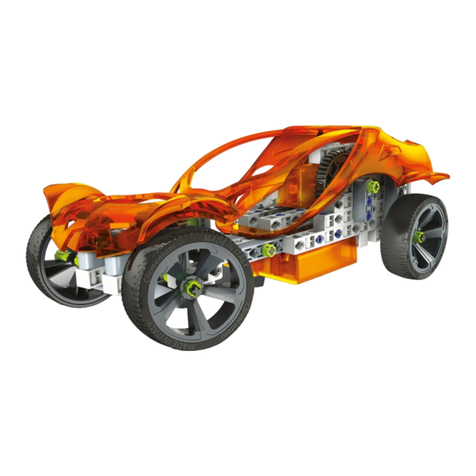
Clementoni
Clementoni Science & Play TechnoLogic Mechanics Laboratory... User manual
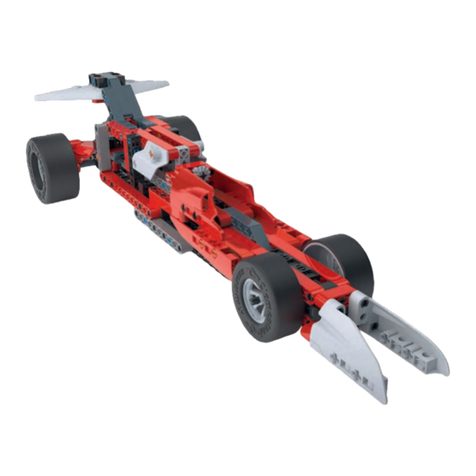
Clementoni
Clementoni 61591 User manual
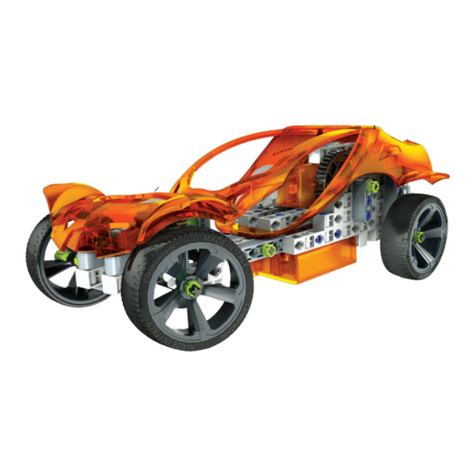
Clementoni
Clementoni science & play TECHNOLOGIC MECHANICS... User manual

Clementoni
Clementoni Science & Play TechnoLogic Mechanics Laboratory... User manual

Clementoni
Clementoni 61591 User manual
Popular Toy manuals by other brands

LEGO
LEGO Ferrari 30195 Building instructions
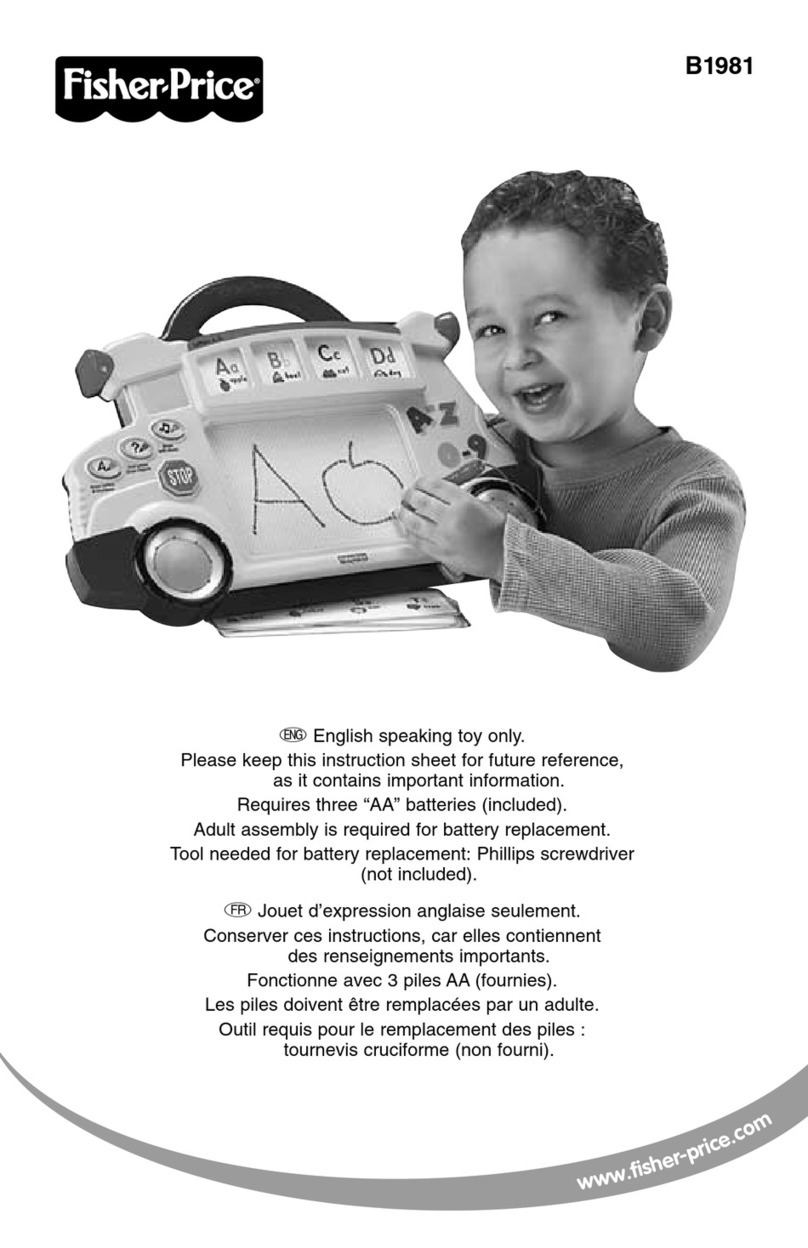
Fisher-Price
Fisher-Price B1981 instructions
Fisher-Price
Fisher-Price Rescue Heroes Action Trackers Jake Justice with Police... manual
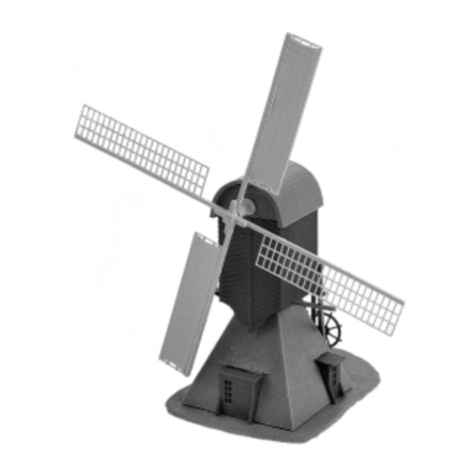
Faller
Faller Windmill manual
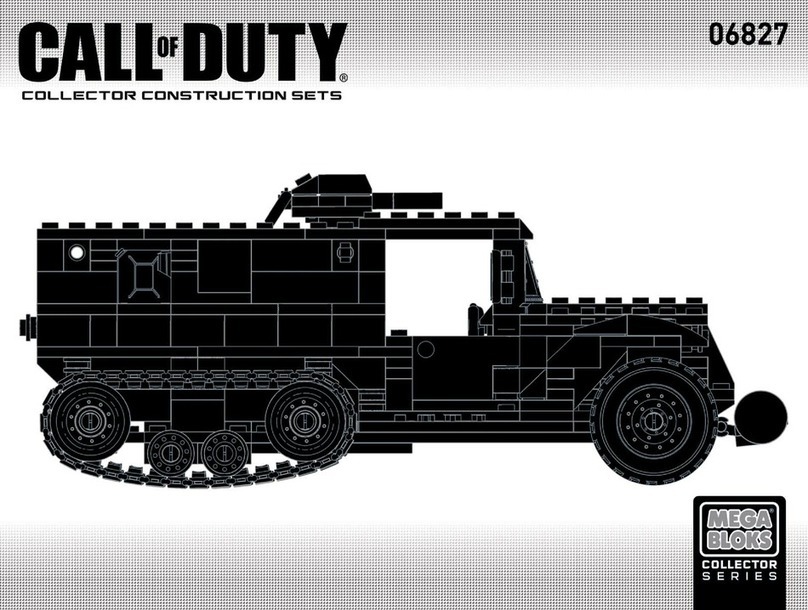
Mega Bloks
Mega Bloks Collector Series instructions
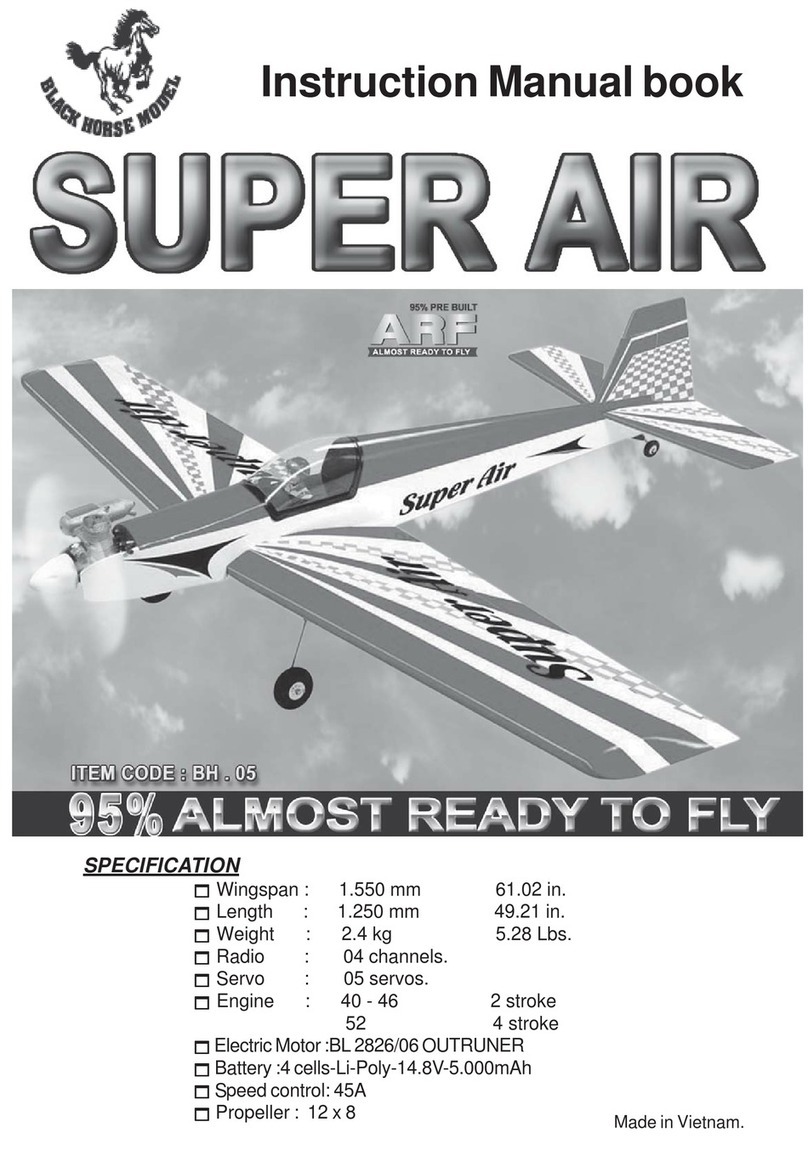
Black Horse Model
Black Horse Model SUPER AIR BH.05 instruction manual


